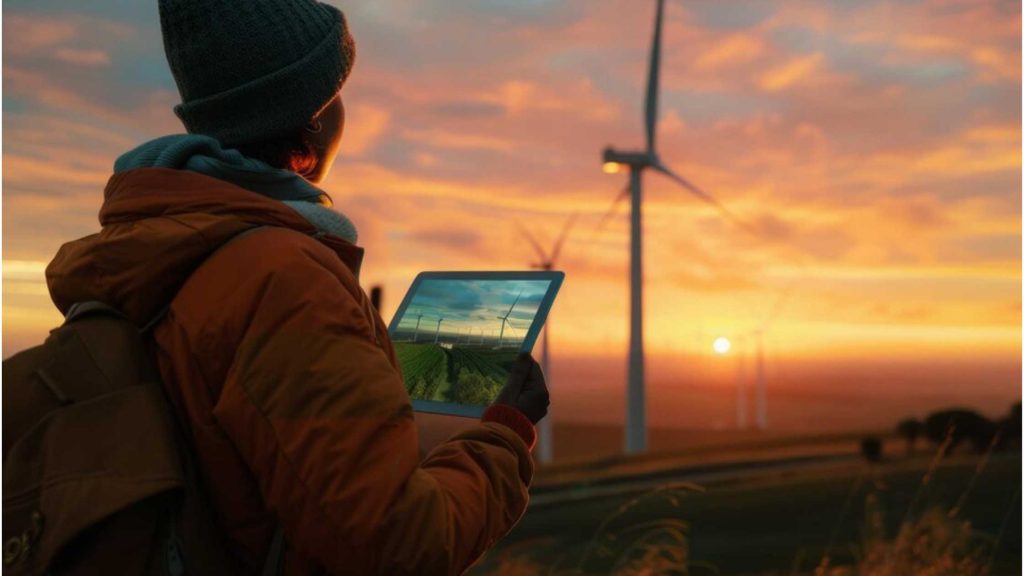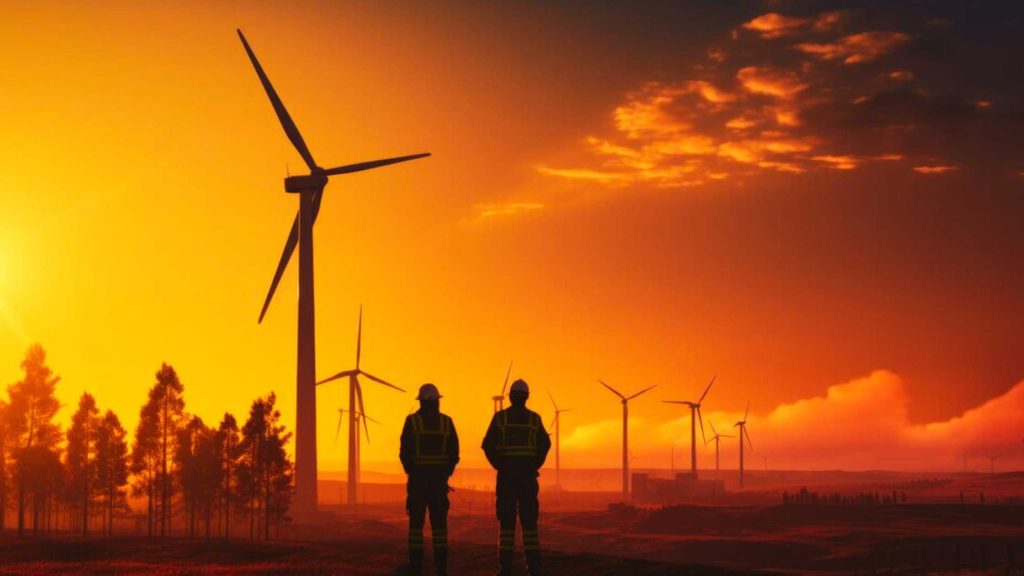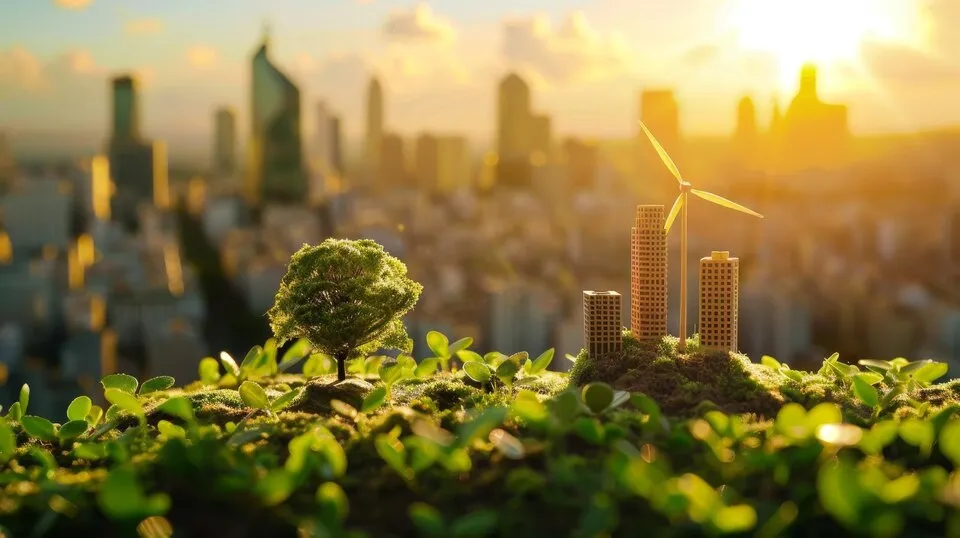Amid the urgent global crisis of climate change, the hunt for sustainable energy solutions has reached a critical point. Wind power stands out among the renewable possibilities because it uses the Earth’s natural air currents to generate electricity. As society moves toward decarbonization and embraces the transition to cleaner energy sources, the importance of wind energy becomes increasingly apparent. Within this story, we will delve into the dynamic world of wind power, anticipating the trends and technologies that will influence its future in the following decades.
Understanding the Landscape
To truly grasp wind energy’s potential future, we must first understand its current state. Wind power has evolved dramatically in recent decades, establishing its dominance in the global energy landscape. According to the International Renewable Energy Agency (IRENA), cumulative global wind capacity stood at 651 gigawatts (GW) in 2020, demonstrating the industry’s growing significance. This development trend emphasizes wind energy’s critical role in diversifying the energy mix and decreasing dependency on fossil fuels.

Wind energy’s scenery is typified by towering turbines that harness the invisible currents of the atmosphere to generate clean, renewable electricity. These towering towers, which are frequently found in large wind farms onshore and offshore, represent humanity’s search for sustainable energy sources. With each rotation of their blades, they contribute to the global fight against climate change and ensure a greener future for future generations.
The rise of wind power is the result of a combination of technological innovation, advantageous legislation, and increased environmental awareness. It is a light of hope for the transition to a carbon-neutral economy, providing a compelling alternative to traditional energy sources. As the wind sector matures and expands, its impact on the future energy environment cannot be understated.
Key Drivers of Growth
Several factors have fueled the expansion of wind energy:
- Environmental imperatives: The urgent need to combat climate change and reduce greenhouse gas emissions has prompted the broad adoption of renewable energy, especially wind power. Wind energy, which harnesses the Earth’s natural wind resources, provides a clean and sustainable alternative to fossil fuels, so helping to minimize environmental damage and promote a better future.
- Technological Advances: Continuous breakthroughs in turbine design, materials, and manufacturing methods have transformed wind turbine efficiency and reliability. Modern wind turbines can absorb more energy from the wind and function more efficiently in a variety of climatic situations because of innovations such as bigger towers, longer blades, and enhanced aerodynamics.
- Economic viability: Wind energy’s lower prices, combined with supportive government policies and incentives, have increased its competitiveness relative to traditional fossil fuel sources. As the cost of wind power falls, it becomes a more appealing option for energy generation, providing both economic and environmental benefits.
- Energy Security: Wind energy provides countries with a consistent and indigenous supply of power, reducing dependency on imported fossil fuels and improving energy security. Countries can increase their energy independence and reduce the risks associated with geopolitical tensions and changes in global energy markets by diversifying their energy mix and tapping into local wind resources.
Trends Shaping the Future
Looking ahead, several trends will affect the future of wind energy:
- Offshore Wind Expansion: The untapped potential of offshore wind provides a major opportunity to increase global wind capacity. Leading nations like as the United Kingdom, Denmark, and China are driving offshore wind development, leveraging the stronger and more constant winds found at sea. Expanding offshore wind farms not only makes use of abundant renewable resources but also decreases land use issues and broadens wind energy’s geographical reach, resulting in a more diverse and resilient energy portfolio.
- Larger and Taller Turbines: The never-ending chase of larger and taller wind turbines drives industry innovation. By increasing turbine size, manufacturers can capture more wind energy at higher altitudes, where wind speeds are usually greater and more consistent. Advances in design and materials have permitted the building of taller towers and longer blades, optimizing energy capture and increasing the cost-effectiveness of wind power generation. As turbines rise in size, they open up new possibilities for higher efficiency and production, cementing wind energy’s place as a key renewable energy source.
- Digitalization and Data Analytics: The combination of digital technologies, including IoT sensors and predictive analytics, is changing the face of wind farm management. Real-time data monitoring and analysis allows operators to fine-tune turbine performance, reduce downtime, and extend equipment lifespan. This digital transition improves operating efficiency, increases safety, and lowers maintenance costs, ultimately increasing the productivity and dependability of wind energy generation.
- Hybrid Energy Systems: Combining wind power with complementing technologies such as solar PV and energy storage creates synergistic benefits in the energy environment. These hybrid systems provide a balanced and robust energy mix, which reduces intermittency and improves grid stability. They contribute to a more sustainable and adaptable energy infrastructure by utilizing different renewable sources and storage systems, which can fulfill variable demand while lowering reliance on fossil fuels.
- Floating Wind Farms: Floating wind farms are a new frontier in offshore wind development, especially in deep-sea conditions where typical fixed-bottom turbines are unfeasible. Innovations in floating wind platforms make it possible to put turbines in previously inaccessible locations, allowing for the use of abundant wind resources far offshore. These floating structures provide scalability, flexibility, and a lower environmental effect than traditional offshore installations, paving the path for increased offshore wind capacity and broader diversification of the renewable energy mix.
Technological Innovations
The future of wind energy is inextricably related to continued technical advancement. Several main areas of research and development are accelerating advancement in the field:
- Advanced Blade Designs: Continuous developments in blade design represent a new frontier in wind turbine technology, with an emphasis on increasing aerodynamic efficiency, lowering noise emissions, and alleviating structural stresses. Innovations including swept blades, serrated trailing edges, and morphing blade designs are designed to maximize performance in a variety of wind situations. These cutting-edge blade designs contribute to higher turbine output, enhanced dependability, and lower operational costs by improving energy capture and lowering turbulence-induced loads, thereby driving the evolution of wind energy toward greater efficiency and sustainability.
- Vertical Axis Wind Turbines (VAWTs): While horizontal axis wind turbines (HAWTs) now dominate the wind energy market, vertical axis wind turbines (VAWTs) are gaining popularity due to their distinct advantages. VAWTs have omnidirectional wind capture capabilities, making them less sensitive to wind direction and turbulence, resulting in higher energy yield. VAWTs are ideal for urban and scattered applications where space constraints and ease of installation are critical. They have a small footprint and require minimal maintenance. As interest in VAWTs rises, they present a promising path for increasing wind energy deployment and diversifying turbine designs to improve performance in a variety of situations.
- Smart Grid Integration: Including wind power in smart grids improves the flexibility and efficiency of electricity management. Advanced grid technologies such as demand response, energy storage, and grid-scale battery systems allow for dynamic supply and demand balancing, which optimizes the integration of intermittent renewables like wind. Smart grids enable operators to anticipate changes in wind generation and alter grid operations accordingly, providing dependable and consistent electricity distribution while maximizing the use of renewable resources.
- Bladeless Wind Turbines: Bladeless wind turbines represent a paradigm shift in wind energy technology, moving away from traditional designs and toward new methods such as vortex shedding or oscillating airfoils for energy capture. These unorthodox ideas have the potential to provide various benefits, including less visual impact, lower maintenance costs, and increased avian wildlife safety. Bladeless turbines reduce noise pollution and the possibility of blade failure, making them an attractive solution for environmentally sensitive areas and urban settings where traditional turbines may provide aesthetic or practical issues.
Challenges and Opportunities
While the future of wind energy appears optimistic, numerous difficulties must be addressed to fully realize its potential:
- system Integration: The intermittent nature of wind generation poses problems to system stability and reliability. Effective grid integration solutions, such as energy storage, demand-side control, and system enhancements, are critical for increasing the value of wind energy while ensuring grid stability.
- Environmental Considerations: The increase in wind energy must be balanced against environmental concerns, such as the effects on species, habitats, and ecosystems. To reduce negative impacts and promote sustainable siting practices, developers, legislators, and environmental stakeholders must work together.
- Supply Chain Resilience: The worldwide wind industry relies on complicated supply networks that cross several countries and regions. Ensuring supply chain resilience and managing risks from geopolitical tensions, trade conflicts, and resource restrictions are crucial to wind energy’s long-term survival.
- Community interaction: Meaningful interaction with local communities is critical for gaining support for wind energy projects and addressing concerns about visual impact, noise, and property values. Proactive communication, community benefit agreements, and participatory decision-making processes can all contribute to creating trust and social acceptance.
Key Takeaways
As we make the transition to a low-carbon future, wind energy emerges as a key component of the global energy landscape. Wind energy’s future looks promising, thanks to continued technology improvements, regulatory backing, and international collaboration. By harnessing the wind’s power, we can create a more sustainable and resilient energy future for future generations.
Wind energy’s potential as a clean, abundant, and limitless resource may be achieved through a combination of innovation, collaboration, and strategic planning, bringing us closer to a renewable-powered world. As we embark on this trip, let us take the opportunity to harness the wind’s limitless power and move humanity toward a brighter, greener future.



This article offers a fascinating and thorough perspective on the future of wind energy! The emphasis on advancements like floating wind farms and bladeless turbines is particularly intriguing, as these innovations could redefine how we harness wind power in challenging environments.
I also appreciate the focus on hybrid systems and digital integration, as these will undoubtedly play a critical role in overcoming intermittency challenges. It would be great to see more discussion on the potential for international collaboration to accelerate deployment and innovation, especially in emerging economies with significant untapped wind resources.
Overall, an inspiring read that highlights the boundless possibilities of wind energy in the fight against climate change. Thank you for sharing!